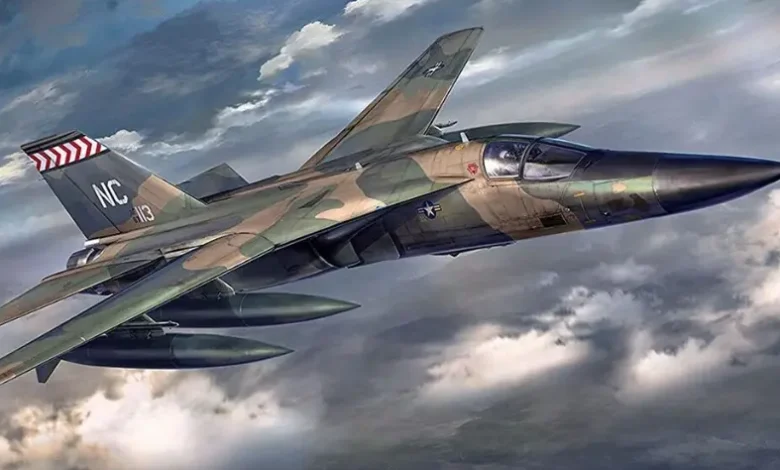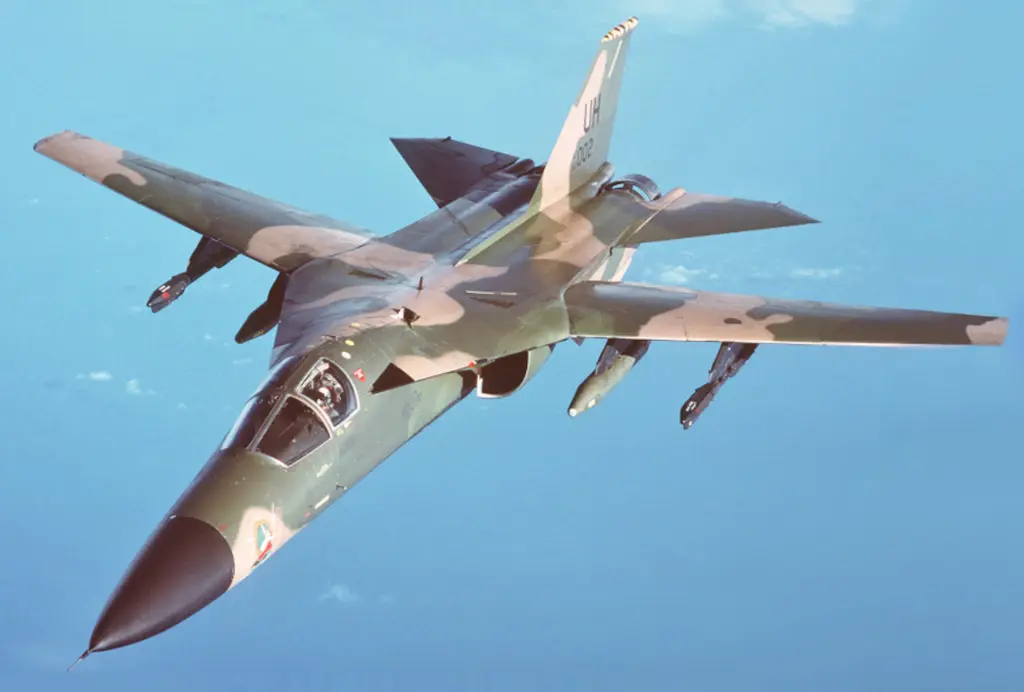General Dynamics FB-111A Aardvark

The General Dynamics FB-111A Aardvark was a strategic bomber variant of the F-111, developed for the United States Air Force as a medium-range, supersonic, swing-wing bomber. Entering service in 1969, the FB-111A replaced the B-58 Hustler and B-52s in the Strategic Air Command for medium-range nuclear strike missions until its retirement in 1991.
Fact Sheet
| Role | Medium-Range Strategic Bomber |
|---|---|
| Manufacturer | General Dynamics |
| First Flight | July 30, 1967 (FB-111A) |
| Service Entry | 1969 |
| Crew | 2 (pilot, weapons systems officer) |
| Number Built | 76 |
Specifications (FB-111A Model)
| Length | 73 ft 6 in (22.4 m) |
|---|---|
| Wingspan | 63 ft (19.2 m) spread, 32 ft (9.75 m) swept |
| Height | 17 ft (5.2 m) |
| Wing Area | 657 sq ft (61.0 m²) |
| Empty Weight | 47,481 lb (21,540 kg) |
| Loaded Weight | 92,000 lb (41,730 kg) |
| Max Takeoff Weight | 119,250 lb (54,110 kg) |
| Powerplant | 2 × Pratt & Whitney TF30-P-7 turbofan engines (20,350 lbf each with afterburner) |
| Max Speed | Mach 2.2 (1,452 mph, 2,336 km/h) at altitude |
| Cruise Speed | Mach 0.75 (575 mph, 925 km/h) |
| Range | 4,600 mi (7,400 km) ferry, 2,000 mi (3,200 km) combat |
| Service Ceiling | 56,000 ft (17,000 m) |
Armament & Defensive Equipment
| Guns | None |
|---|---|
| Bomb Load | Up to 31,500 lb (14,300 kg) of bombs or nuclear weapons |
| Aiming Equipment | AN/APQ-144 radar, advanced navigation and bombing systems |
Notable Features
- Swing-wing (variable geometry) design for high-speed and low-level penetration
- Supersonic speed and long range for strategic missions
- Served as a nuclear deterrent in the Strategic Air Command
- Replaced by the B-1B Lancer in the early 1990s
- Some airframes converted to EF-111A Raven for electronic warfare

The FB-111A Aardvark was a variant of the General Dynamics F-111, specifically developed as a strategic bomber for the U.S. Air Force’s Strategic Air Command (SAC). Unlike the tactical fighter-bomber F-111, the FB-111A was a longer-range aircraft designed to serve as a nuclear-capable deterrent during the Cold War.
Role and Design
The FB-111A was conceived in the 1960s to replace the aging B-58 Hustler and to supplement the B-52 Stratofortress. It was an interim solution for the strategic bombing role until a new, more advanced bomber, initially the B-1 Lancer, could be introduced.
The FB-111A retained the F-111’s key features, including its variable-geometry “swing wings” and a side-by-side cockpit, which were critical for its mission. The swing-wing design allowed the aircraft to perform short takeoffs and landings with wings fully extended, and then sweep them back for supersonic flight at both high and low altitudes. The aircraft’s terrain-following radar enabled it to fly at high speed and very low altitudes—often as low as 200 feet—to evade enemy radar.
However, the FB-111A differed from other F-111 variants in a few key ways:
- Strengthened Airframe and Landing Gear: To handle a larger fuel and weapons load, the FB-111A had a reinforced fuselage and landing gear.
- Increased Fuel Capacity: It carried more internal fuel to extend its range for strategic missions.
- Avionics: The FB-111A was equipped with the Mark IIB avionics suite, which included a new attack radar and an improved inertial navigation system tailored for nuclear delivery missions.
- Armament: Its primary weapon was the AGM-69 Short-Range Attack Missile (SRAM), a nuclear-tipped air-to-surface missile. It could carry up to six SRAMs, two internally and four on external pylons. It could also carry nuclear gravity bombs in its internal bay.
Service and Retirement
A total of 76 FB-111As were delivered to the USAF and operated exclusively by Strategic Air Command. They served as a crucial component of the U.S. nuclear triad from 1969 until the end of the Cold War.
With the collapse of the Soviet Union and the subsequent change in strategic priorities, the need for a dedicated nuclear bomber like the FB-111A diminished. The arrival of the B-1B Lancer, which was a larger, faster, and more capable bomber, made the FB-111A largely redundant. The FB-111A fleet was officially retired in the early 1990s. Many of the aircraft were converted to the tactical F-111G configuration and continued to serve in a conventional bombing role until they were fully retired in 1996.



